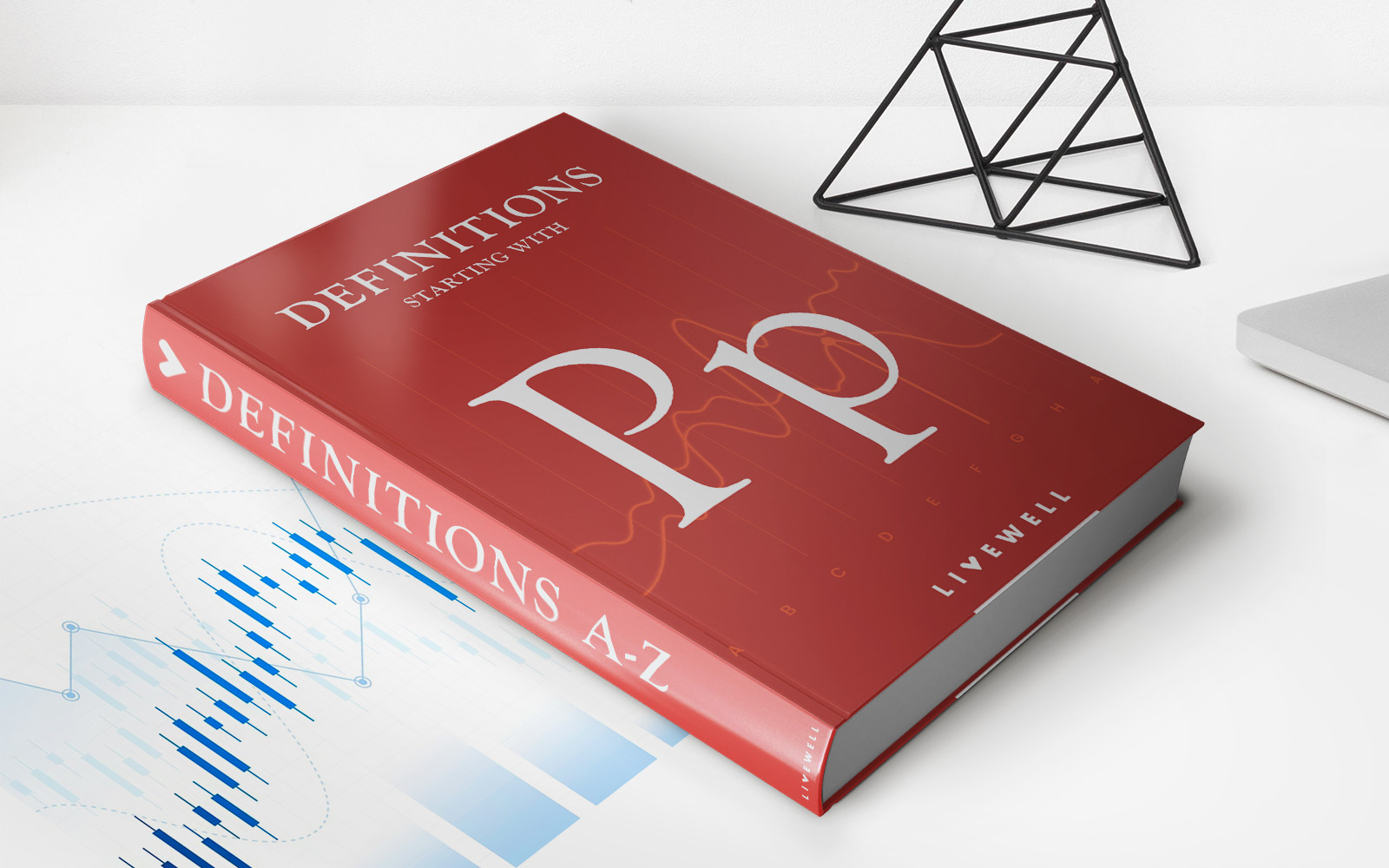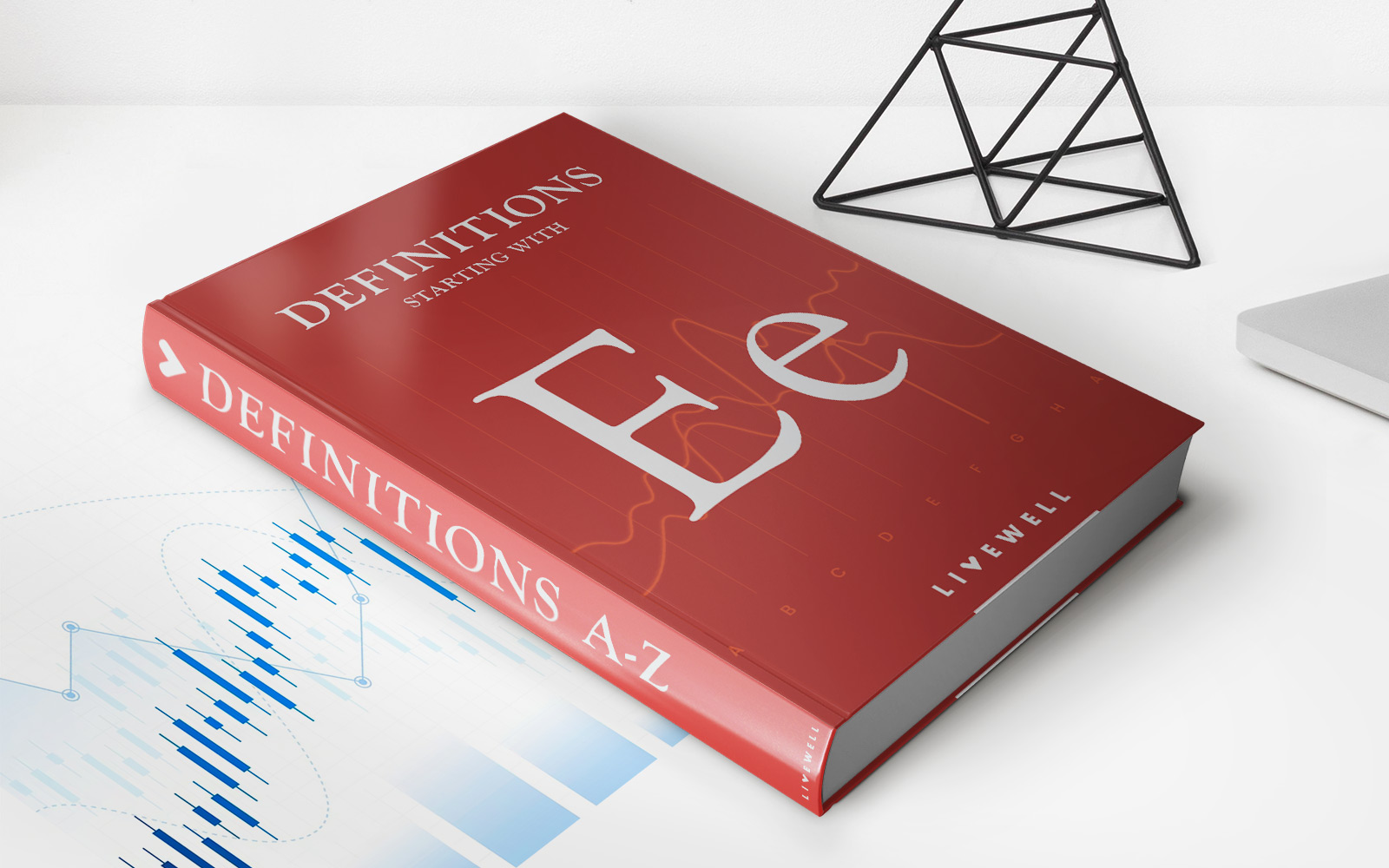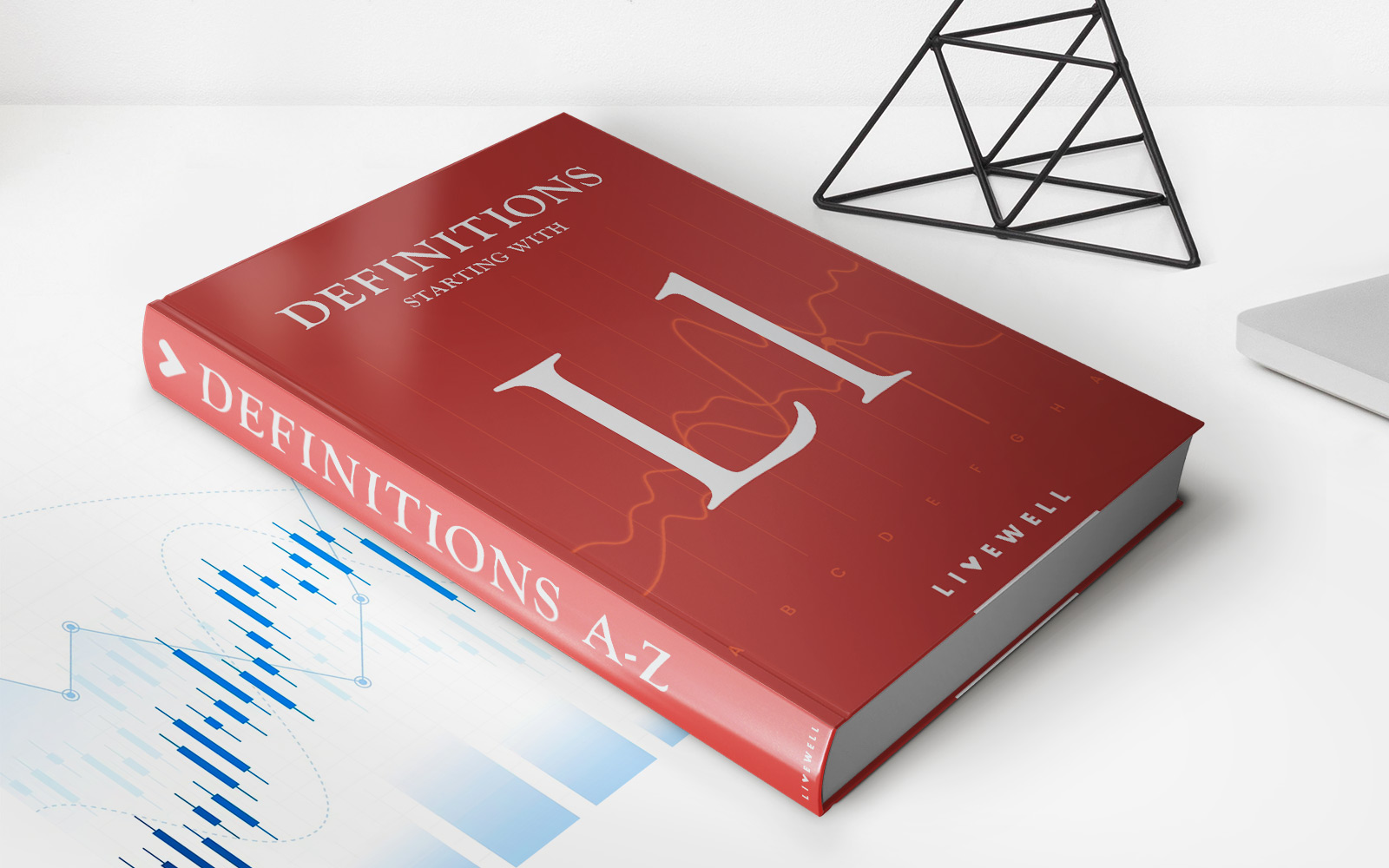

Finance
What Is PPA In Accounting
Published: October 9, 2023
Learn what PPA (Purchase Price Allocation) means in accounting and how it impacts finance. Gain insights into this essential financial concept for businesses.
(Many of the links in this article redirect to a specific reviewed product. Your purchase of these products through affiliate links helps to generate commission for LiveWell, at no extra cost. Learn more)
Table of Contents
Introduction
Welcome to the world of accounting! In the vast landscape of finance, there are various tools and concepts that businesses use to measure and report their financial performance. One such concept is PPA, which stands for Purchase Price Allocation. PPA plays a crucial role in accounting, particularly in the context of mergers and acquisitions.
PPA in accounting refers to the process of allocating the purchase price of a company’s assets and liabilities when it is acquired by another entity. This process allows for a fair and accurate representation of the acquired company’s financial position in the books of the acquiring entity.
Understanding PPA is essential for businesses involved in mergers and acquisitions, as it helps in making informed financial decisions and complying with accounting standards. In this article, we will explore the definition, purpose, components, process, methods, importance, challenges, and examples of PPA in accounting.
So, let’s dive deeper into the world of PPA and uncover its significance in financial reporting and analysis.
Definition of PPA in Accounting
Purchase Price Allocation (PPA) is an accounting term that refers to the process of assigning the purchase price of a company’s assets and liabilities when it is acquired by another entity. In other words, it is the method used to distribute the total purchase consideration among the individual assets and liabilities acquired.
When one company is acquired by another, the acquiring company must determine the fair value of the assets and liabilities it has gained through the acquisition. This is where PPA comes into play. The PPA process involves analyzing the fair value of tangible and intangible assets, as well as identifying and valuing liabilities.
PPA is guided by accounting principles such as the Generally Accepted Accounting Principles (GAAP) or International Financial Reporting Standards (IFRS), depending on the jurisdiction in which the company operates. These accounting standards provide guidelines on how to assess and allocate the purchase price to various assets and liabilities.
The main objective of PPA is to ensure that the financial statements of the acquiring company reflect the fair value of the assets and liabilities acquired. By accurately recording the financial impact of the acquisition, PPA allows for a more transparent and comprehensive analysis of the financial position and performance of the combined entity.
It is important to note that PPA is not limited to acquisitions; it can also apply to other transactions such as business combinations, joint ventures, and asset purchases. In any case, the PPA process helps in providing a more accurate representation of the financial impact of such transactions.
Now that we understand the definition of PPA, let’s explore its purpose and why it is critical in the world of accounting.
Purpose of PPA
The purpose of Purchase Price Allocation (PPA) in accounting is multi-faceted and serves several important objectives for businesses involved in mergers and acquisitions. Let’s delve into the key purposes of PPA:
- Fair value determination: PPA allows for the fair valuation of assets and liabilities acquired in an acquisition. By assessing the fair value of these items, PPA ensures that the financial statements of the acquiring company accurately reflect the current market value of the acquired assets and liabilities.
- Transparent financial reporting: PPA plays a crucial role in providing transparent financial reporting. By allocating the purchase price to individual assets and liabilities based on their fair value, PPA helps to disclose the true financial impact of the acquisition. This transparency is essential for stakeholders, including investors, lenders, and regulatory bodies, to make informed decisions and assess the financial health of the acquiring company.
- Compliance with accounting standards: PPA helps companies comply with accounting standards, such as GAAP or IFRS. These standards provide specific guidelines on how to allocate the purchase price among various assets and liabilities. By following these guidelines, the acquiring company ensures adherence to accounting principles and maintains financial accuracy and integrity.
- Enhanced decision-making: PPA provides valuable information for decision-making purposes. It enables the acquiring company to assess the financial impact of the acquisition and evaluate the value of the acquired assets and liabilities. This information is crucial for determining the return on investment, evaluating synergies, and making strategic decisions about integrating the acquired company into the existing business operations.
- Accounting for intangible assets: PPA allows for the proper accounting and valuation of intangible assets. Intangible assets, such as patents, trademarks, and customer relationships, may not have a readily determinable value. Through PPA, the acquiring company can allocate a portion of the purchase price to these intangible assets based on their fair value, ensuring accurate financial reporting.
Overall, the purpose of PPA is to provide a comprehensive, transparent, and accurate representation of the financial impact of an acquisition. It ensures compliance with accounting standards, facilitates fair value determination, and supports informed decision-making. Without PPA, financial reporting would lack accuracy and transparency, undermining the credibility of the acquiring company’s financial statements.
Components of PPA
When conducting a Purchase Price Allocation (PPA), several components need to be considered. These components play a crucial role in determining the fair value of the acquired assets and liabilities. Let’s explore the key components of PPA:
- Tangible Assets: Tangible assets refer to physical assets that have a measurable value. Examples include buildings, equipment, land, and inventory. The fair value of these assets is determined based on various factors such as current market prices, appraisals, and condition assessments.
- Intangible Assets: Intangible assets are non-physical assets that provide value to the company but do not have a physical form. Examples include patents, trademarks, copyrights, customer relationships, and brand value. Determining the fair value of intangible assets can be complex and involves methods such as the income approach, market approach, or cost approach.
- Liabilities: In addition to assets, PPA also considers the fair value of liabilities assumed in the acquisition. Liabilities can include outstanding debts, contract obligations, and legal liabilities. The fair value is calculated based on factors such as the present value of future cash flows or market prices for similar liabilities.
- Goodwill: Goodwill represents the difference between the purchase price and the fair value of identifiable net assets acquired. It is an intangible asset that reflects the reputation, brand value, customer loyalty, and other factors that contribute to the expected future earnings of the acquired company. Goodwill is calculated as part of the PPA process and is subject to periodic impairment testing.
- Contingent Consideration: Contingent consideration refers to future payments that may be owed to the seller based on certain conditions or performance targets. These payments are typically contingent on the achievement of specific business milestones or financial goals. The fair value of contingent consideration is estimated at the acquisition date and may be reassessed over time.
These components collectively contribute to the fair value assessment and allocation of the purchase price. Each component requires careful analysis and valuation to ensure accurate representation in the acquiring company’s financial statements. Through a detailed evaluation of tangible assets, intangible assets, liabilities, goodwill, and contingent consideration, PPA enables companies to reflect the true economic value of the acquisition and support transparent financial reporting.
PPA Process
The Purchase Price Allocation (PPA) process involves several steps to determine the fair value and allocate the purchase price to the individual assets and liabilities acquired. Let’s walk through the typical PPA process:
- Identifying and recording assets and liabilities: The first step is to identify all the assets and liabilities acquired in the transaction. This includes both tangible and intangible assets, as well as any outstanding liabilities assumed by the acquiring company.
- Valuing tangible assets: The next step is to determine the fair value of tangible assets, such as land, buildings, equipment, and inventory. This may involve obtaining appraisals, conducting market research, or relying on industry benchmarks to assess the current market value of these assets.
- Evaluating intangible assets: The valuation of intangible assets, such as patents, trademarks, and customer relationships, requires more complex analysis. Different methods, such as the income approach, market approach, or cost approach, may be used to estimate the fair value of these intangible assets.
- Assessing liabilities: The fair value of liabilities assumed in the acquisition is evaluated by considering factors such as the present value of future cash flows, market prices for similar liabilities, or professional estimations. Outstanding debts, contract obligations, and legal liabilities are taken into account during this assessment.
- Determining goodwill: Goodwill represents the excess of the purchase price over the fair value of identifiable net assets acquired. It is calculated as part of the PPA process, taking into consideration the value of intangible assets, reputation, brand value, and other factors contributing to future earnings. Goodwill is subject to periodic impairment testing.
- Allocating the purchase price: Once the fair values of the various components have been determined, the next step is to allocate the purchase price among the identified assets and liabilities. This allocation is based on their respective fair values and is recorded in the acquiring company’s financial statements.
- Periodic reviews and adjustments: PPA is a dynamic process, and periodic reviews and adjustments may be required. The fair values of assets and liabilities may change over time, affecting the allocated purchase price. It is essential to reassess these values and make adjustments as necessary to maintain accurate financial reporting.
The PPA process requires a deep understanding of accounting principles, valuation methods, and industry expertise. It is important to seek the guidance of accounting professionals and adhere to relevant accounting standards to ensure the accuracy and transparency of the PPA process.
Methods Used in PPA
When performing a Purchase Price Allocation (PPA), various methods can be used to assess the fair value of assets and liabilities. These methods help determine the appropriate allocation of the purchase price. Let’s explore some commonly used methods in PPA:
- Income Approach: The income approach estimates the fair value of an asset by considering the present value of its expected future cash flows. This method focuses on the income-generating potential of the asset and typically involves discounting projected cash flows using an appropriate discount rate.
- Market Approach: The market approach compares the subject asset or liability to similar assets or liabilities that have been recently sold in the market. This method relies on market transactions and seeks to determine fair value based on the prices observed in the marketplace. Various techniques, such as price multiples or benchmarking, can be employed under this approach.
- Cost Approach: The cost approach values an asset based on the cost required to replace or reproduce it. This method accounts for the value of the asset by considering the cost of acquiring or building a similar asset, adjusted for depreciation or obsolescence. It is commonly used for tangible assets and is particularly relevant when no active market exists for the asset.
- Valuation Specialists: In some cases, companies may engage independent valuation specialists or appraisers to assist with the PPA process. These specialists have expertise in valuing complex assets and liabilities and can provide professional opinions and analysis to determine fair value.
- Internal Expertise: Companies may also rely on their internal accounting and finance teams to perform the PPA. These teams, equipped with financial expertise and knowledge of the company’s operations, can evaluate the fair value of assets and liabilities based on internal data, market research, and industry knowledge.
It is important to note that the selection of the appropriate method in PPA depends on the nature of the asset or liability being valued, availability of market data, and the specific circumstances of the acquisition. Each method has its own advantages and limitations, and multiple methods may be used in combination to ensure a comprehensive and accurate valuation.
Regardless of the method used, it is crucial to document and justify the valuation process and methodology followed during the PPA to maintain transparency and compliance with accounting standards.
Importance of PPA in Financial Reporting
Purchase Price Allocation (PPA) plays a critical role in financial reporting, particularly in the context of mergers and acquisitions. It has several key importance in ensuring accurate and transparent financial reporting. Let’s explore the significance of PPA in financial reporting:
- Accurate asset valuations: PPA enables companies to accurately determine the fair value of the acquired assets. This ensures that the financial statements reflect the true value of the assets and liabilities acquired, providing a more accurate representation of the combined entity’s financial position.
- Transparent financial statements: PPA helps maintain transparency in financial reporting by clearly disclosing the fair values and allocation of the purchase price. This allows stakeholders, including investors, lenders, and regulatory bodies, to understand the financial impact of the acquisition and make informed decisions.
- Compliance with accounting standards: PPA ensures compliance with accounting standards, such as GAAP or IFRS, which provide specific guidance on allocation methods and disclosure requirements. By following these standards, companies maintain consistency in financial reporting and facilitate comparability across industries and jurisdictions.
- Enhanced decision-making: Accurate PPA enables informed decision-making by providing a comprehensive understanding of the financial impact of the acquisition. With transparent and reliable financial information, management can evaluate the return on investment, assess synergies, and make strategic decisions regarding the integration of the acquired company into their existing operations.
- Mitigation of financial risks: PPA helps manage the financial risks associated with acquisitions. By accurately valuing and accounting for the acquired assets and liabilities, companies can mitigate the risk of overstating or understating the financial impact of the acquisition, avoiding potential compliance issues or misrepresentation of financial performance.
- Investor and stakeholder confidence: Transparent and accurate financial reporting through proper PPA fosters investor and stakeholder confidence. When financial statements reflect the fair value of assets and liabilities, investors can make more informed decisions, lenders can assess creditworthiness, and stakeholders can have trust in the company’s financial performance and governance.
Overall, PPA plays a crucial role in ensuring accurate and transparent financial reporting in the context of mergers and acquisitions. By adhering to accounting standards, accurately valuing assets and liabilities, and providing transparent disclosure, PPA contributes to reliable financial statements that support decision-making and promote stakeholder confidence.
Challenges in Implementing PPA
While Purchase Price Allocation (PPA) is a critical process in financial reporting, it is not without its challenges. Implementing PPA can present various complexities and hurdles for companies involved in mergers and acquisitions. Let’s explore some common challenges in implementing PPA:
- Valuation of intangible assets: One of the major challenges in PPA is the valuation of intangible assets such as brand value, customer relationships, and intellectual property. Determining the fair value of these intangible assets is often subjective and complex, as it involves estimating future cash flows, market comparables, and other factors that contribute to their value.
- Estimating useful lives and impairment: Assigning useful lives to intangible assets and ensuring their proper impairment testing can be challenging. Companies need to make assumptions and judgments about the economic life of these assets, which can affect the allocation of the purchase price and subsequent accounting for impairment expenses in the future.
- Complexity of business combinations: In mergers and acquisitions involving multiple entities or complex business structures, PPA can become more challenging. Consolidating financial information from different entities, dealing with intercompany transactions, and allocating the purchase price among numerous assets and liabilities require careful analysis and coordination.
- Limited market data: The availability of reliable market data for similar transactions or benchmarking can be limited, especially for unique or specialized assets. Without adequate market data, determining the fair value of assets and liabilities may rely more on professional estimates and assumptions, introducing additional uncertainties into the PPA process.
- Integration of acquired systems and data: Successfully integrating the financial systems and data of the acquired company into the acquiring company’s existing infrastructure can pose challenges. Harmonizing accounting policies, reconciling different reporting practices, and consolidating financial information may require substantial time, resources, and expertise.
- Changing regulatory landscape: The accounting standards and regulatory requirements around PPA can evolve over time. Staying updated with changes in accounting standards, such as new guidance on fair value measurement or reporting requirements, adds another layer of complexity to the PPA process.
Overcoming these challenges in implementing PPA requires a combination of technical expertise, thorough analysis, and effective communication among various stakeholders involved in the acquisition. Seeking guidance from accounting professionals, conducting thorough due diligence, and maintaining documentation of the PPA process help address these challenges and ensure the accuracy and compliance of financial reporting.
Examples of PPA
To better understand Purchase Price Allocation (PPA) in action, let’s explore a few examples of how PPA is applied in real-world scenarios:
- Technology Acquisition: Company A acquires Company B, a technology startup, for $50 million. In the PPA process, Company A identifies and allocates the purchase price among various assets and liabilities. This includes valuing tangible assets such as office equipment and inventory, assessing the fair value of intangible assets such as patents and software, and recognizing any assumed liabilities. The PPA analysis ensures that the financial statements of Company A accurately reflect the fair value of the acquired technology assets and liabilities.
- Brand Acquisition: Company X acquires a well-known global brand, Company Y, for $500 million. As part of the PPA process, Company X must assess the fair value of the brand, customer relationships, and other intangible assets associated with Company Y’s business. Using appropriate valuation methods, such as the relief-from-royalty approach or the income approach, the PPA analysis determines the fair value of these intangible assets, allowing for proper accounting and disclosure in Company X’s financial statements.
- Business Combination: Company M merges with Company N to form a new entity. In this case, PPA involves the consolidation of financial information from both companies and the allocation of the combined purchase price to the acquired assets and liabilities. The PPA process ensures that the financial statements of the new entity accurately reflect the fair value and financial impact of the business combination, including the valuation of intangible assets, goodwill, and any contingent consideration.
- Asset Purchase: Company J purchases a manufacturing facility from Company K for $20 million. The PPA process in this asset purchase involves allocating the purchase price to the tangible assets acquired, such as land, buildings, and equipment. Valuing these assets accurately ensures that the financial statements of Company J reflect the true value of the acquired assets and facilitate informed decision-making regarding the investment.
- Joint Venture Formation: Two companies, Company P and Company Q, form a joint venture entity. As part of the PPA process, the combined purchase price is allocated to the assets contributed by each company to the joint venture. This includes valuing tangible and intangible assets and recognizing any assumed liabilities. The PPA analysis enables the joint venture entity to report the fair value of the contributed assets accurately and maintain transparency in its financial reporting.
These examples illustrate how PPA is applied in various acquisition scenarios, including technology acquisitions, brand acquisitions, business combinations, asset purchases, and joint ventures. In each case, PPA ensures accurate and transparent financial reporting by allocating the purchase price and determining the fair value of assets and liabilities in compliance with accounting standards.
Conclusion
Purchase Price Allocation (PPA) is a vital concept in the field of accounting, particularly in the context of mergers and acquisitions. It involves the process of allocating the purchase price of an acquired company’s assets and liabilities to ensure accurate financial reporting. Throughout this article, we have explored the definition, purpose, components, process, methods, importance, challenges, and examples of PPA.
PPA serves several important purposes. It facilitates fair value determination of assets and liabilities, promotes transparent financial reporting, ensures compliance with accounting standards, enhances decision-making, and helps manage financial risks. By accurately valuing assets and liabilities, PPA provides a comprehensive understanding of the financial impact of an acquisition, enabling stakeholders to make informed decisions.
However, implementing PPA comes with its own set of challenges. Valuing intangible assets, estimating useful lives and impairment, dealing with complex business combinations, limited market data, integrating acquired systems and data, and staying updated with changing regulations are some of the hurdles that organizations may face when performing PPA. Overcoming these challenges requires expertise, analysis, and effective communication with relevant stakeholders.
Real-world examples have demonstrated how PPA is applied in various acquisition scenarios, such as technology acquisitions, brand acquisitions, business combinations, asset purchases, and joint ventures. By following proper PPA practices, companies can ensure accurate financial reporting, transparent disclosure, and stakeholder confidence.
In conclusion, PPA plays a critical role in accounting, providing a framework for accurate valuation, allocation, and disclosure of the purchase price in mergers and acquisitions. By embracing PPA and addressing its challenges, companies can enhance their financial reporting, support decision-making processes, and maintain transparency in the ever-changing world of finance.














